-
 Bitcoin
Bitcoin $112400
-1.07% -
 Ethereum
Ethereum $3409
-3.27% -
 XRP
XRP $2.784
-6.60% -
 Tether USDt
Tether USDt $0.9997
-0.03% -
 BNB
BNB $739.3
-2.09% -
 Solana
Solana $158.0
-2.90% -
 USDC
USDC $0.9998
-0.02% -
 TRON
TRON $0.3213
-0.94% -
 Dogecoin
Dogecoin $0.1929
-5.01% -
 Cardano
Cardano $0.6974
-2.82% -
 Hyperliquid
Hyperliquid $36.69
-2.31% -
 Sui
Sui $3.327
-4.80% -
 Stellar
Stellar $0.3672
-5.18% -
 Chainlink
Chainlink $15.65
-3.07% -
 Bitcoin Cash
Bitcoin Cash $525.0
-1.68% -
 Hedera
Hedera $0.2291
-6.00% -
 Avalanche
Avalanche $20.91
-2.96% -
 Ethena USDe
Ethena USDe $1.000
0.00% -
 Toncoin
Toncoin $3.520
-1.12% -
 UNUS SED LEO
UNUS SED LEO $8.968
0.14% -
 Litecoin
Litecoin $105.7
0.26% -
 Shiba Inu
Shiba Inu $0.00001181
-1.79% -
 Polkadot
Polkadot $3.492
-2.08% -
 Uniswap
Uniswap $8.800
-3.10% -
 Dai
Dai $0.9999
-0.01% -
 Monero
Monero $289.9
-3.17% -
 Bitget Token
Bitget Token $4.243
-1.27% -
 Pepe
Pepe $0.00001006
-3.67% -
 Cronos
Cronos $0.1248
-5.68% -
 Aave
Aave $249.7
-2.50%
How to use Bitget API? Bitget developer interface configuration guide
The Bitget API enables developers to automate trading and access real-time market data by using an API key and handling authentication securely.
May 30, 2025 at 12:14 am
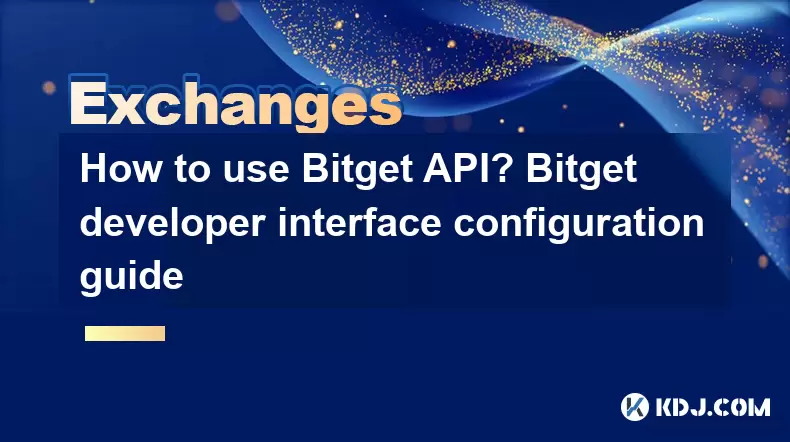
Introduction to Bitget API
The Bitget API is a powerful tool designed for developers who want to interact with the Bitget cryptocurrency exchange programmatically. By using the Bitget API, developers can automate trading, access real-time market data, manage user accounts, and much more. This guide will walk you through the steps needed to configure and use the Bitget API effectively.
Registering for a Bitget Account
Before you can use the Bitget API, you need to have a Bitget account. If you do not already have one, follow these steps:
- Visit the Bitget website and click on the "Sign Up" button.
- Enter your email address and create a strong password.
- Complete the verification process by clicking on the verification link sent to your email.
- Once your account is verified, log in to your Bitget account.
Creating an API Key
To use the Bitget API, you need to create an API key. Here's how you can do it:
- Log in to your Bitget account and navigate to the "API Management" section.
- Click on "Create API Key."
- Provide a name for your API key to help you remember its purpose.
- Set up the necessary permissions based on what you plan to do with the API. For example, if you want to trade, make sure you enable trading permissions.
- Complete the two-factor authentication (2FA) process if it is enabled on your account.
- Once the API key is created, you will receive an API Key and a Secret Key. Keep these keys secure and do not share them with anyone.
Configuring Your Development Environment
To interact with the Bitget API, you need to set up your development environment. Here are the steps to do so:
- Choose a programming language that supports HTTP requests, such as Python, JavaScript, or Java.
- Install any necessary libraries or SDKs. For Python, you can use the
requestslibrary to make HTTP requests. - Set up a secure way to store your API keys, such as using environment variables or a secure configuration file.
Here's an example of how to set up your Python environment:
- Install the
requestslibrary by runningpip install requests. - Create a new Python file and import the
requestslibrary. - Set up your API keys using environment variables or a secure configuration file.
Making Your First API Request
Once your environment is set up, you can start making API requests. Here’s an example of how to make a GET request to retrieve market data:
- Open your Python file and add the following code:
import requests
import osLoad API keys from environment variables
api_key = os.environ.get('BITGET_API_KEY')
api_secret = os.environ.get('BITGET_API_SECRET')
Set the API endpoint
endpoint = 'https://api.bitget.com/api/spot/v1/market/tickers'
Set the headers with your API key
headers = {
'X-BITGET-API-KEY': api_key,
'X-BITGET-API-SIGN': api_secret
}
Make the GET request
response = requests.get(endpoint, headers=headers)
Check if the request was successful
if response.status_code == 200:
data = response.json()
print(data)
else:
print(f'Error: {response.status_code}')
- Run the script to see the market data returned by the Bitget API.
Handling Authentication
The Bitget API uses API keys for authentication. Here’s how to handle authentication in your requests:
- Every request to the Bitget API must include the
X-BITGET-API-KEY header with your API key. - You also need to include the
X-BITGET-API-SIGN header, which is a signature generated using your API secret key and the request parameters. - The signature generation process involves creating a string from the request parameters, hashing it with your secret key, and then including the resulting signature in the header.
Here’s an example of how to generate the signature in Python:
import hmac
import hashlib
import time
def generate_signature(secret_key, timestamp, params):
# Sort the parameters
sorted_params = sorted(params.items())
# Create the signature string
signature_string = f'{timestamp}\n' + '\n'.join(f'{k}={v}' for k, v in sorted_params)
# Generate the signature
signature = hmac.new(secret_key.encode(), signature_string.encode(), hashlib.sha256).hexdigest()
return signature
Example usage
timestamp = str(int(time.time() * 1000))
params = {'symbol': 'BTCUSDT'}
signature = generate_signature(api_secret, timestamp, params)
Include the signature in your headers
headers = {
'X-BITGET-API-KEY': api_key,
'X-BITGET-API-SIGN': signature,
'X-BITGET-TIMESTAMP': timestamp
}
Managing Rate Limits
The Bitget API has rate limits to prevent abuse. Here’s how to manage these limits:
- Be aware of the rate limits for different types of requests. For example, public endpoints like market data have higher limits than private endpoints like trading.
- Implement a system to track your request rate and pause your script if you are approaching the limit.
- Use the
X-BITGET-RATELIMIT-REMAININGheader returned in API responses to monitor your remaining requests.
Here’s an example of how to handle rate limits in Python:
import timeTrack the number of requests made
requests_made = 0
Function to make a request with rate limiting
def make_request_with_rate_limit(endpoint, headers):
global requests_made
if requests_made >= 100: # Assuming a limit of 100 requests per minute
time.sleep(60) # Wait for a minute
requests_made = 0
response = requests.get(endpoint, headers=headers)
requests_made += 1
# Check the remaining rate limit
remaining = response.headers.get('X-BITGET-RATELIMIT-REMAINING')
if remaining and int(remaining) < 10:
time.sleep(10) # Wait for 10 seconds if less than 10 requests remain
return response
Handling Errors and Exceptions
When working with the Bitget API, it’s important to handle errors and exceptions gracefully. Here’s how to do it:
- Use try-except blocks to catch and handle exceptions.
- Check the status code of the response to determine if the request was successful.
- Use the
error_code and error_message fields in the response to understand the nature of any errors.
Here’s an example of error handling in Python:
try:
response = requests.get(endpoint, headers=headers)
response.raise_for_status() # Raise an exception for bad status codes
data = response.json()
if data.get('code') != 0:
print(f'Error: {data.get("msg")}')
else:
print(data)
except requests.exceptions.RequestException as e:
print(f'Request error: {e}')
except ValueError as e:
print(f'JSON decoding error: {e}')
Frequently Asked Questions
Q: Can I use the Bitget API for automated trading?
A: Yes, the Bitget API supports automated trading. You can use it to place orders, manage your positions, and execute trading strategies programmatically. Make sure to set the appropriate permissions when creating your API key.
Q: Is there a limit to the number of API keys I can create?
A: Yes, there is a limit to the number of API keys you can create on Bitget. The exact limit may vary, but typically, you can create up to 5 API keys per account. If you need more, you may need to contact Bitget support.
Q: How can I secure my API keys?
A: To secure your Bitget API keys, store them in a secure location such as environment variables or a configuration file that is not committed to version control. Never share your API keys or include them in your code. Additionally, use two-factor authentication (2FA) to add an extra layer of security to your account.
Q: What should I do if I encounter a rate limit error?
A: If you encounter a rate limit error, pause your script and wait for the rate limit to reset. You can also implement a system to track your request rate and adjust your script to stay within the limits. Always monitor the X-BITGET-RATELIMIT-REMAINING header to manage your requests effectively.
Disclaimer:info@kdj.com
The information provided is not trading advice. kdj.com does not assume any responsibility for any investments made based on the information provided in this article. Cryptocurrencies are highly volatile and it is highly recommended that you invest with caution after thorough research!
If you believe that the content used on this website infringes your copyright, please contact us immediately (info@kdj.com) and we will delete it promptly.
- BlockDAG, SEI, Ethena: Top Crypto Performers Under the Microscope
- 2025-08-03 10:50:16
- Bitcoin Blasts Past $119K: How Institutional Adoption and Macro Shifts Fuel the Fire
- 2025-08-03 10:55:16
- Crypto, Grok, and August: Decoding the Latest Trends and Insights
- 2025-08-03 11:10:16
- Crypto, Phishing, and Your Wallet: A New Yorker's Guide to Staying Safe
- 2025-08-03 10:30:16
- Troller Cat Meme Coin Presale Soars: A New King in the Crypto Jungle?
- 2025-08-03 10:30:16
- Grayscale, Altcoin Trust, and Mid-Cap Mania: What's the Deal?
- 2025-08-03 08:50:16
Related knowledge

How to set and manage alerts on the Gemini app?
Aug 03,2025 at 11:00am
Understanding the Gemini App Alert SystemThe Gemini app offers users a powerful way to stay informed about their cryptocurrency holdings, price moveme...
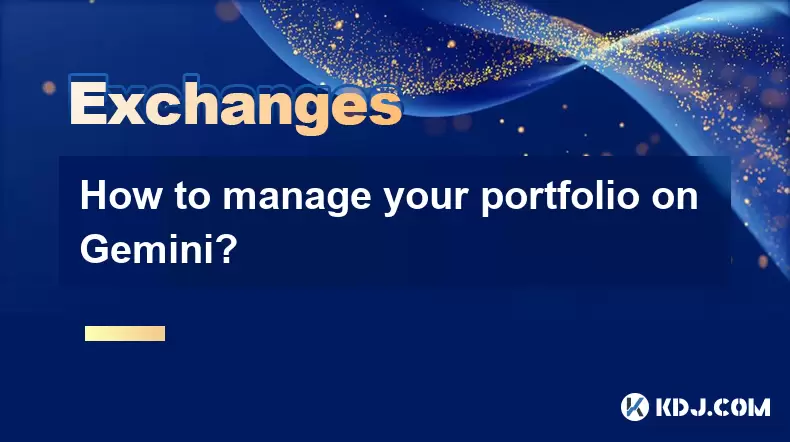
How to manage your portfolio on Gemini?
Aug 03,2025 at 10:36am
Accessing Your Gemini Portfolio DashboardTo begin managing your portfolio on Gemini, you must first log in to your account through the official websit...
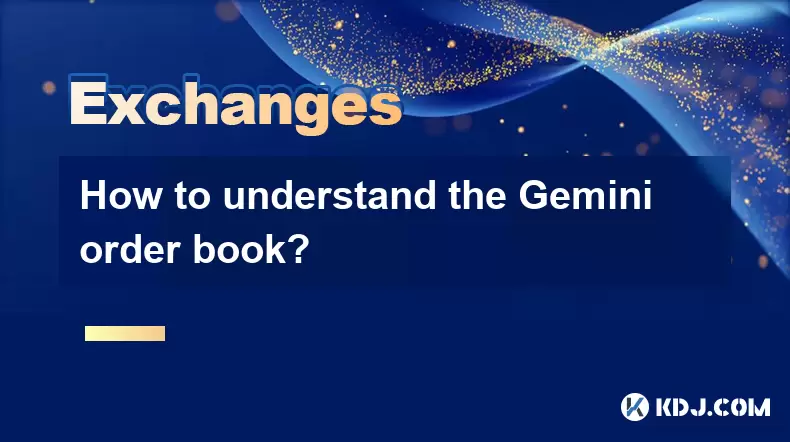
How to understand the Gemini order book?
Aug 02,2025 at 03:35pm
What Is the Gemini Order Book?The Gemini order book is a real-time ledger that displays all open buy and sell orders for a specific cryptocurrency tra...
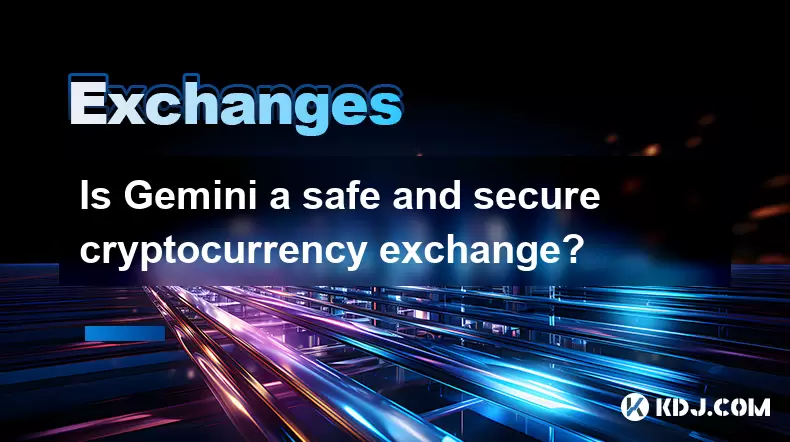
Is Gemini a safe and secure cryptocurrency exchange?
Aug 02,2025 at 10:42pm
Understanding Gemini’s Regulatory ComplianceGemini is a New York State-chartered trust company, which places it under the supervision of the New York ...
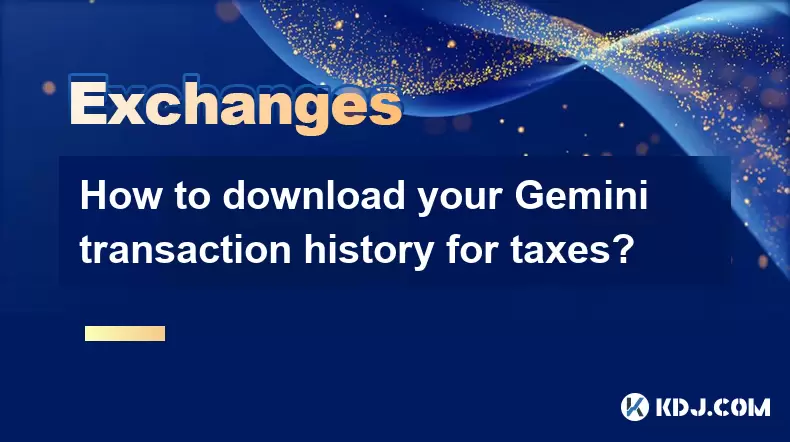
How to download your Gemini transaction history for taxes?
Aug 03,2025 at 09:15am
Understanding Gemini Transaction History for Tax PurposesWhen preparing your cryptocurrency tax filings, having a complete and accurate record of all ...
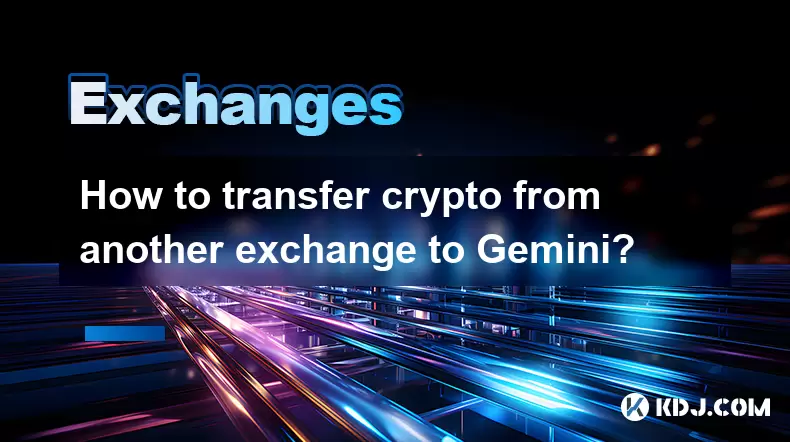
How to transfer crypto from another exchange to Gemini?
Aug 02,2025 at 07:28pm
Understanding the Basics of Crypto Transfers to GeminiTransferring cryptocurrency from another exchange to Gemini involves moving digital assets from ...

How to set and manage alerts on the Gemini app?
Aug 03,2025 at 11:00am
Understanding the Gemini App Alert SystemThe Gemini app offers users a powerful way to stay informed about their cryptocurrency holdings, price moveme...

How to manage your portfolio on Gemini?
Aug 03,2025 at 10:36am
Accessing Your Gemini Portfolio DashboardTo begin managing your portfolio on Gemini, you must first log in to your account through the official websit...

How to understand the Gemini order book?
Aug 02,2025 at 03:35pm
What Is the Gemini Order Book?The Gemini order book is a real-time ledger that displays all open buy and sell orders for a specific cryptocurrency tra...

Is Gemini a safe and secure cryptocurrency exchange?
Aug 02,2025 at 10:42pm
Understanding Gemini’s Regulatory ComplianceGemini is a New York State-chartered trust company, which places it under the supervision of the New York ...

How to download your Gemini transaction history for taxes?
Aug 03,2025 at 09:15am
Understanding Gemini Transaction History for Tax PurposesWhen preparing your cryptocurrency tax filings, having a complete and accurate record of all ...

How to transfer crypto from another exchange to Gemini?
Aug 02,2025 at 07:28pm
Understanding the Basics of Crypto Transfers to GeminiTransferring cryptocurrency from another exchange to Gemini involves moving digital assets from ...
See all articles

























































































